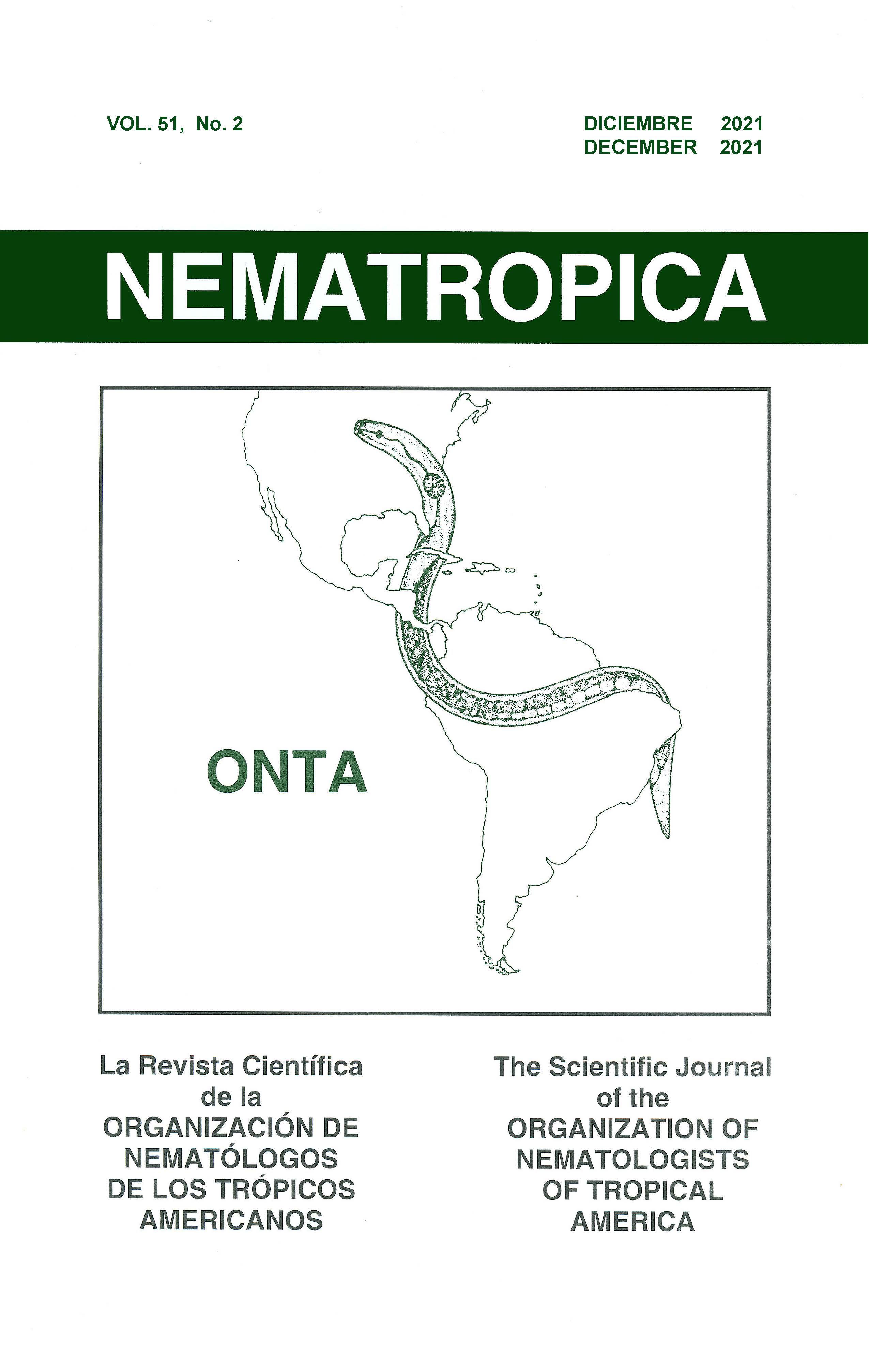PHYLOGENETIC RELATIONSHIPS OF BELONOLAIMUS LONGICAUDATUS POPULATIONS ASSOCIATED WITH TURFGRASSES IN THE SOUTHEASTERN USA
摘要
The D2-D3 and ITS regions of rDNA from 31 populations of Belonolaimus longicaudatus associated with turfgrasses in different locations of southeastern USA were sequenced and subjected to phylogenetic analysis. The result showed that there were variations in DNA sequences among populations and morphology and morphometric characters as well. The phylogenetic analysis using D2-D3 LSU and ITS1-5.8S-ITS2 rDNA sequences grouped the south Florida populations together with 91 and 81% support, separated from a subclade containing other B. longicaudatus populations from other localities. The south Florida populations as a group tended to have smaller mean stylet knob width and stylet/tail length and shorter mean lip, stylet, and esophagus lengths. Principal components analysis of seven selected morphometric characters also showed correlations among populations related to the subclade to which they belong. Overall, results suggest that the populations from turfgrasses in south Florida fit morphologically with the paratypes of B. longicaudatus described by Rau (1958) from central Florida, which had a stylet and tail length ratio value ≤ 1. Conversely, the populations from other localities grouping in a different subclade in the phylogenetic tree had the highest range of stylet and tail length values >1. Although parasitism to turfgrasses by the B. longicaudatus populations grouping in the two different subclades results in serious damage, more studies are needed to define many biological, ecological and genetic aspects of these populations from turfgrasses.

